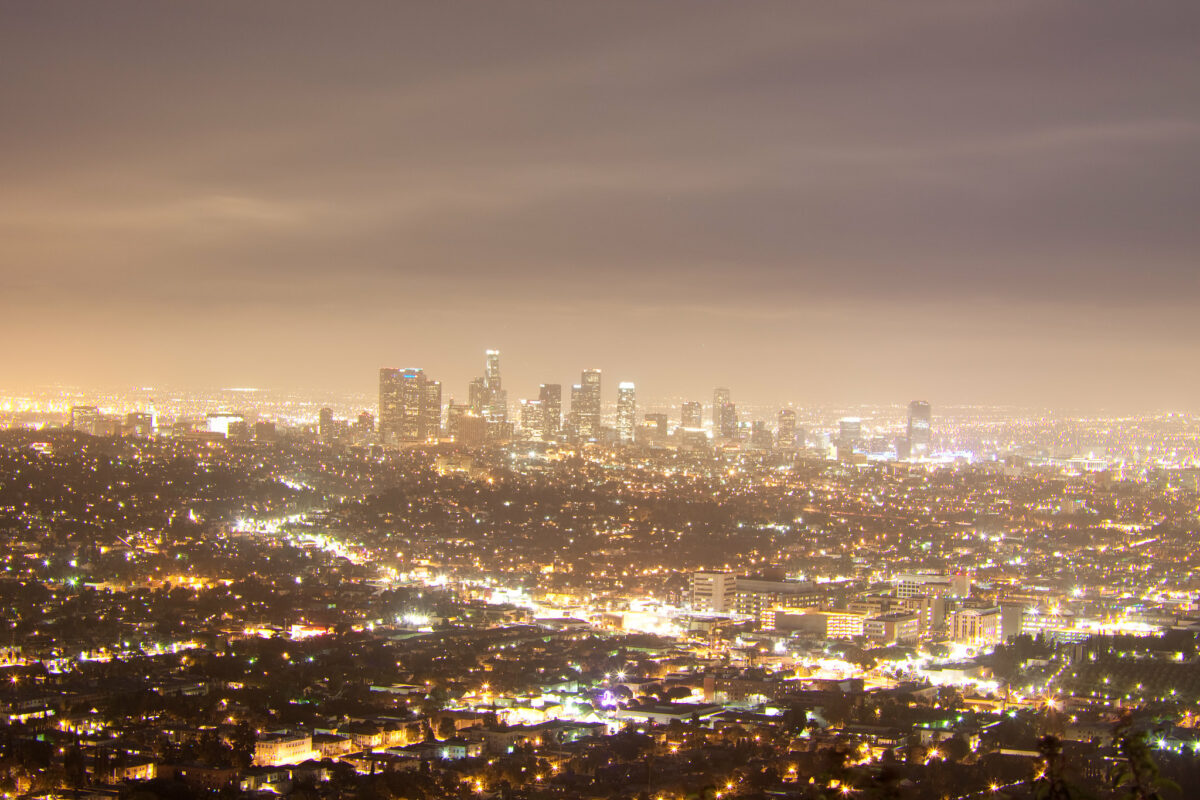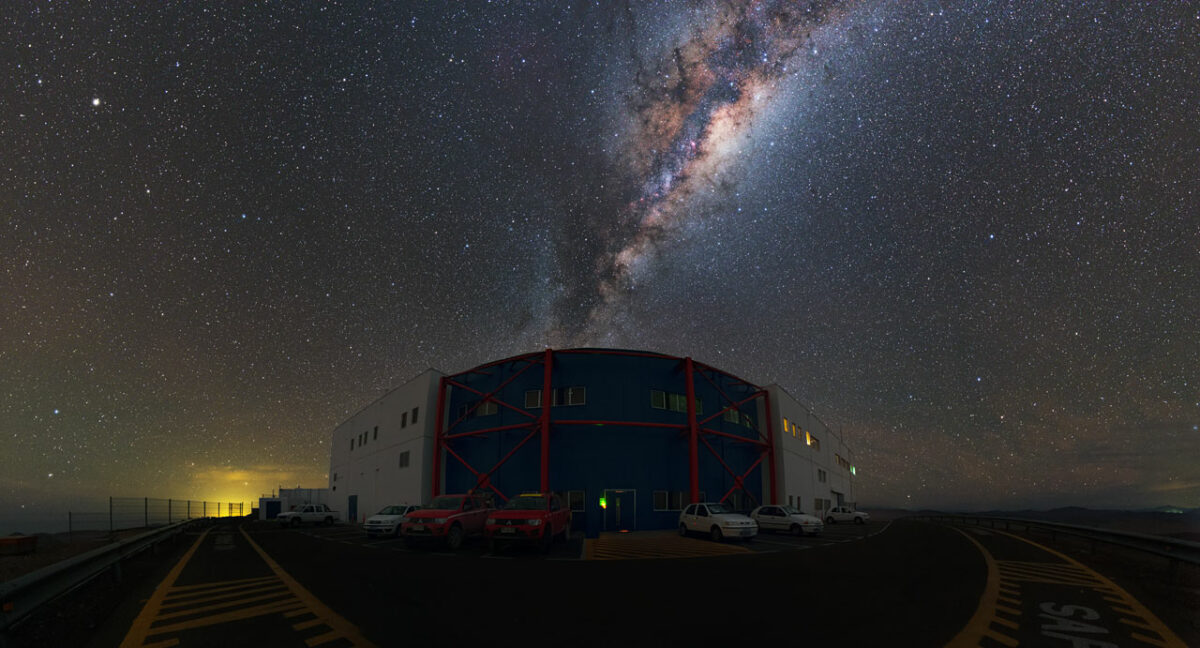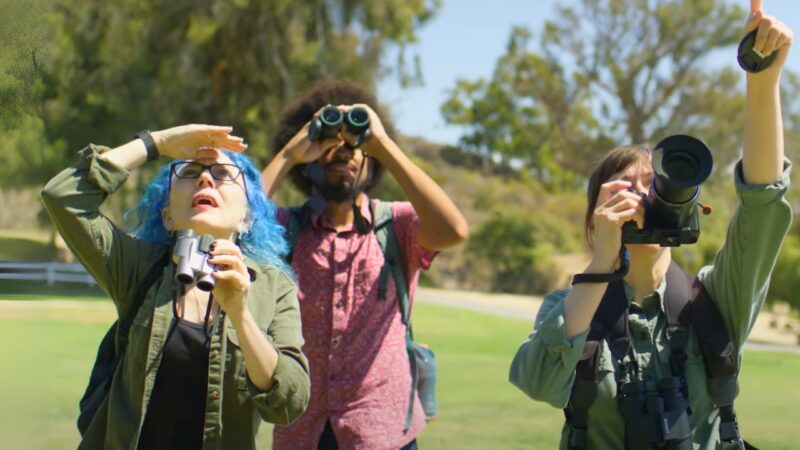
How to dim the consequences of global light pollution
The harm excessive light causes animals and humans, plus mitigation solutions, are detailed in a new report
Our ancestors could look up and see the Milky Way — our galaxy — as a large band of white light stretching across the sky. Because of light pollution, that’s no longer the case. One study estimated that 60% of Europeans and 80% of Americans have never seen it at all.
Light pollution comes from artificial lights that shine upward and create skyglow, a brightening of the night sky that obscures stars and other celestial objects. This excess light is increasing by approximately 10% per year.
The threats of artificial light — and recommendations to minimize it — are the subject of “The World at Night,” a 160-page report published by the Dark Sky Group of the International Union for Conservation of Nature, produced by UCLA ecologist Travis Longcore and nine other researchers.
The report is a one-stop reference for anyone concerned about light pollution, said Longcore, an adjunct professor at the Institute of the Environment and Sustainability. It details the harms of light pollution, highlights the importance of dark sky reserves, presents case studies and provides guidelines to minimize the use of artificial light.
Technological innovations and the rise of cities led to a rapid surge in artificial light. In the 25 years from 1992 to 2017, satellite-based research led by the University of Exeter found that global light pollution increased by at least 49%, but the number could be much higher — up to 270%.

Artificial light is changing from dim, warm tones to full-spectrum LEDs, amplifying its negative effects, Longcore said. LEDs produce more blue and green light compared to older high-pressure sodium lights. Astronauts aboard the International Space Station can see the difference from space.
All of this artificial light has serious consequences for human health.
It disrupts internal biological clocks that evolved to a 24-hour night/day cycle, impairing sleep and the body’s ability to produce hormones that are governed by daylight. The sleep hormone melatonin, for example, is produced during daylight and released when it’s dark. This release triggers other hormones that help the body rejuvenate and cope with diseases.
Light pollution also disturbs wildlife and ecosystems. It can even be considered a form of habitat loss, as animals often avoid brightly lit areas.
“It’s an additional stressor and can be the direct cause of mortality,” Longcore said.
Animal behaviors, life stages and predator/prey interactions are adapted to the 24-hour day/night cycle and the 12-month seasonal cycle, according to the report. Too much light at the wrong time confuses them and interferes with mating, reproduction and migration, among other ecological impacts.
Sea turtles, for example, use light as their guide, laying and burying their eggs on beaches at night. When too much artificial light is present, hatchlings, who are meant to find their way to the sea, become disoriented and move in the wrong direction. Lights also confuse insects, which gather around streetlamps and become easy prey. And birds that migrate at night frequently crash into communications towers or brightly lit windows.
Light pollution affects plants, too, disrupting key life cycle stages governed by the presence of light. That can have cascading effects on animals that depend on them, Longcore said.
Dark skies are also significant for cultural reasons.
Storytelling, religious traditions and calendars have depended on the night sky throughout human history. The Maori, Indigenous people of New Zealand, rely on constellations for navigation and predict the success of the coming harvest based on Matariki, a star cluster also known as the Pleiades, that rises in mid-winter. Other cultures honor Matariki, too. In northern Java, Indonesia, it marks the start of the rice planting season. In Southern Africa, the Basotho people associate it with abundance, calling it “the female planter.”
The Declaration in Defense of the Night Sky and the Right to Starlight, adopted at the Starlight Conference held in La Palma, Spain, in 2007, considers it a human right to see an unpolluted night sky. The conference included astronomers, conservation biologists and experts in tourism and cultural preservation.
Prior to the 17th century, human civilizations burned oil or fat for light and had no streetlights, so light pollution was nonexistent. With the rise of electrification in the 1870s, outdoor light spread at an accelerating pace.
Astronomers recognized the light pollution problem in the 1970s. Skyglow was impairing research, obstructing constellations and worsening the quality of telescope observations.
A truly dark sky is still visible in remote research stations and some outdoor locations, but even those places are threatened. In the average American suburb, only a few hundred stars out of about 2,500 expected stars can be seen.
While some light is necessary to maintain the safety and productivity of modern cities, increases in efficiency and reductions in cost have led to its misuse, Longcore said.
Perhaps surprisingly, there is also no conclusive evidence that brightly lit streets increase nighttime safety for drivers and pedestrians. Excessive glare blocks hazards on the road, distracts drivers and reduces night vision, which lowers overall awareness.
Light pollution may seem like a secondary issue compared to other climate change impacts, but it’s easy to reduce. Simply dimming outdoor lighting or directing it only where necessary would make a big difference, said David Welch, lead author of the report and chair of the Dark Skies Advisory Group.
Other solutions include changing the color temperature of outdoor lightning. Light in the blue part of the spectrum — the kind often emitted by LEDs — is especially harmful. It scatters the most and causes the greatest disruptions to people and animals. Warm tones such as amber-colored light are the least harmful and would aid night vision for animals, including people. Timers and motion sensors that turn off lights when they’re not needed would also help.
Over the past few years, Longcore has sent teams of UCLA students to the Central Idaho Dark Sky Reserve — the first sky dark reserve in the United States and the third largest in the world. (The nonprofit DarkSky certifies eligible dark sky areas to help safeguard them from artificial light.)
“Dark sky places are established to recognize that there is value to the natural condition that has now become rare,” Longcore said. Students were blown away by experiencing the Milky Way in a place that is truly dark, he added.
In addition to Longcore and Welch, the report’s authors include Robert Dick of the Royal Astronomical Society of Canada; Karen Treviño of the National Park Service; UCLA alumna Catherine Rich, co-founder and executive officer of the Urban Wildlands Group; John Hearnshaw, professor emeritus at the University of Canterbury; Clive Ruggles, professor emeritus at the University of Leicester; Adam Dalton, formerly of the International Dark-Sky Association, or IDA; IDA Director of Public Policy John Barentine; and István Gyarmath of the Magnitúdó Astronomical Society.




